 Technology peripherals
Technology peripherals
 AI
AI
 Alibaba's new mPLUG-Owl upgrade has the best of both worlds, and modal collaboration enables MLLM's new SOTA
Alibaba's new mPLUG-Owl upgrade has the best of both worlds, and modal collaboration enables MLLM's new SOTA
Alibaba's new mPLUG-Owl upgrade has the best of both worlds, and modal collaboration enables MLLM's new SOTA
OpenAI GPT-4V and Google Gemini have demonstrated very strong multi-modal understanding capabilities, promoting the rapid development of multi-modal large models (MLLM), and MLLM has become The hottest research direction in the industry right now.
MLLM achieves excellent instruction following ability in a variety of visual-linguistic open tasks. Although previous research on multimodal learning has shown that different modalities can collaborate and promote each other, existing MLLM research mainly focuses on improving the ability of multimodal tasks and how to balance the benefits of modal collaboration and the impact of modal interference. remains an important issue that needs to be addressed.
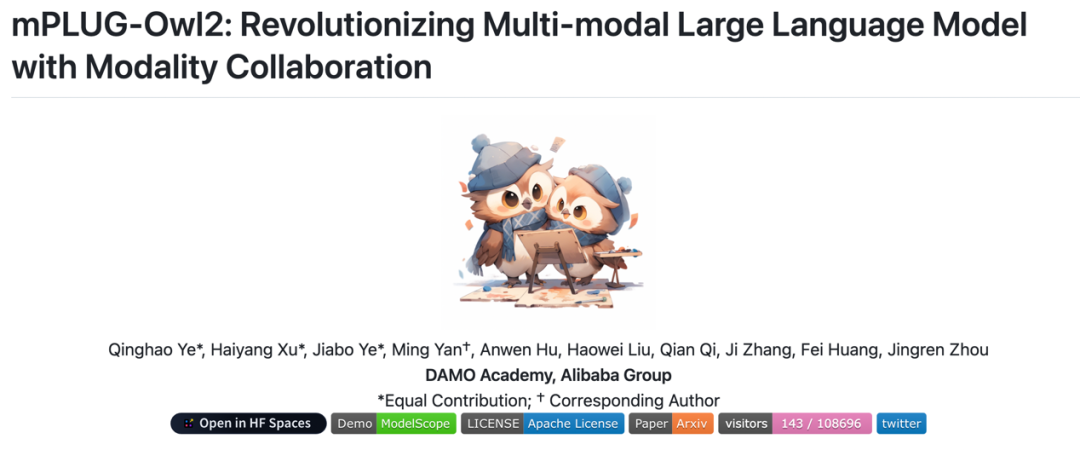
Please click the following link to view the paper: https://arxiv.org/pdf/2311.04257.pdf
-
Please check the following code address: https://github.com/X-PLUG/mPLUG-Owl/tree/main/mPLUG-Owl2
ModelScope experience address: https: //modelscope.cn/studios/damo/mPLUG-Owl2/summary
-
HuggingFace experience address link: https://huggingface.co/spaces/MAGAer13/mPLUG-Owl2
In response to this problem, Alibaba’s multi-modal large model mPLUG-Owl has received a major upgrade. Through modal collaboration, it simultaneously improves the performance of plain text and multi-modality, surpassing LLaVA1.5, MiniGPT4, Qwen-VL and other models, and achieves the best performance in a variety of tasks. Specifically, mPLUG-Owl2 utilizes shared functional modules to promote collaboration between different modalities and introduces a modal adaptation module to retain the characteristics of each modality. With a simple and effective design, mPLUG-Owl2 achieves the best performance in multiple fields including plain text and multi-modal tasks. The study of modal collaboration phenomena also provides inspiration for the future development of multi-modal large models
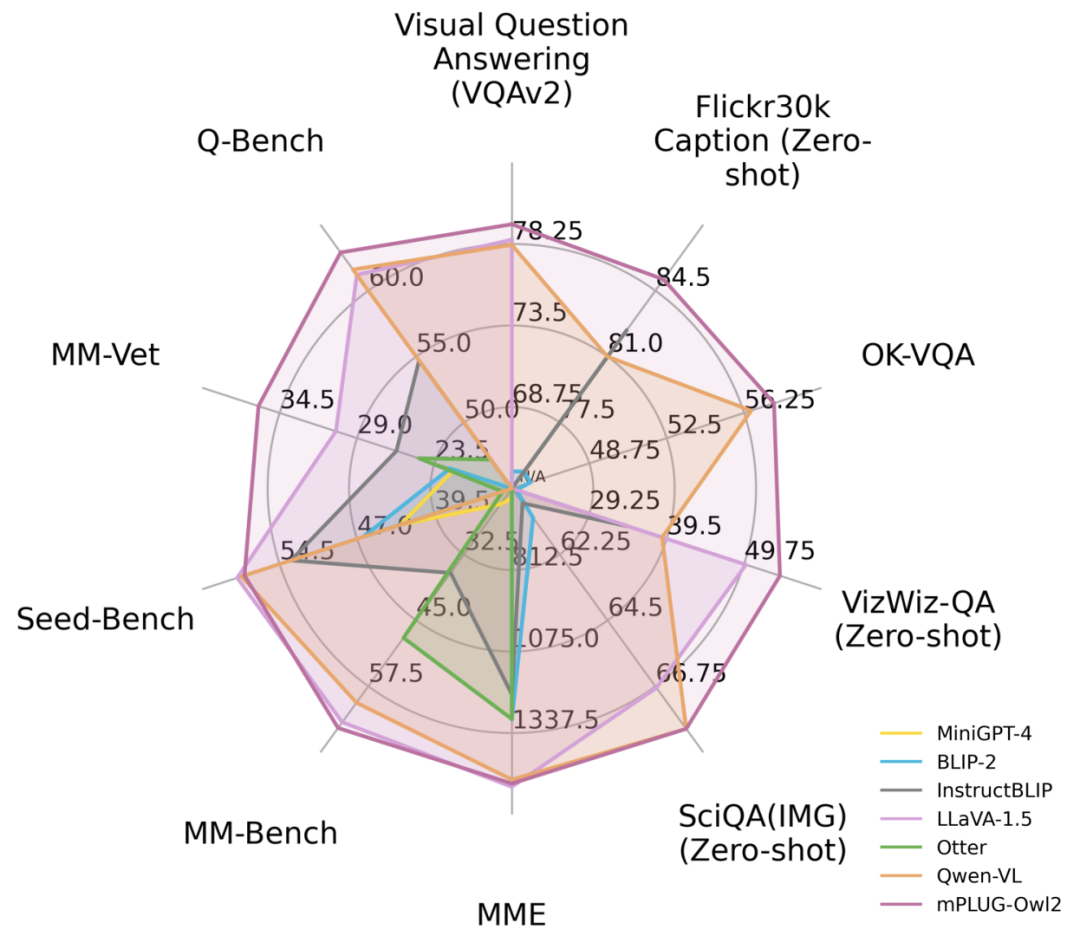
Figure 1 Performance comparison with existing MLLM models
Method introduction In order to achieve the purpose of not changing the original meaning, the content needs to be rewritten into Chinese
mPLUG-Owl2 model mainly consists of three parts:
Visual Encoder: As a visual encoder, ViT-L/14 converts the input image with a resolution of H x W into a sequence of visual tokens of H/14 x W/14 and inputs it into the Visual Abstractor.
Visual Extractor: Extract high-level semantic features by learning a set of available queries while reducing the visual sequence length of the input language model
Language model: LLaMA-2-7B is used as the text decoder, and the modal adaptation module shown in Figure 3 is designed.
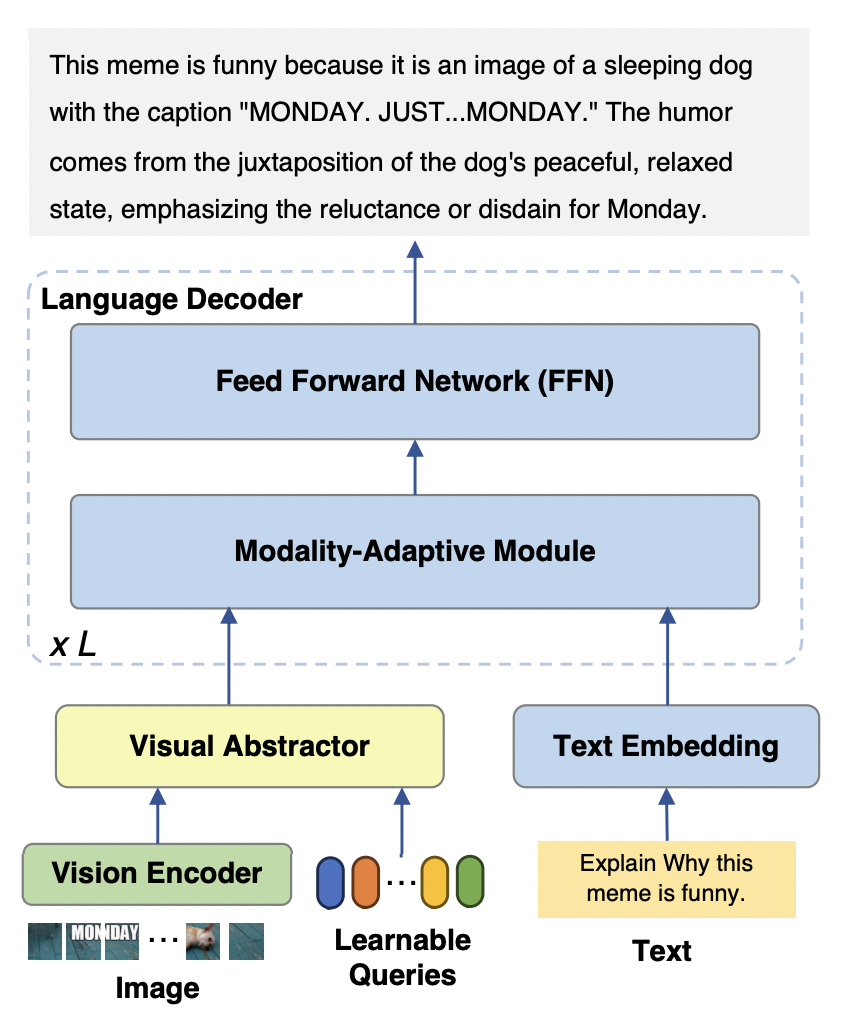
##Figure 2 mPLUG-Owl2 model structure
In order to align the visual and For language modality, existing work usually maps visual features into the semantic space of text. However, this approach ignores the respective characteristics of visual and text information and may affect the performance of the model due to the mismatch of semantic granularity. To solve this problem, this paper proposes a modality-adaptive module (MAM) to map visual and textual features into a shared semantic space, while decoupling visual-linguistic representations to retain the unique properties of each modality. .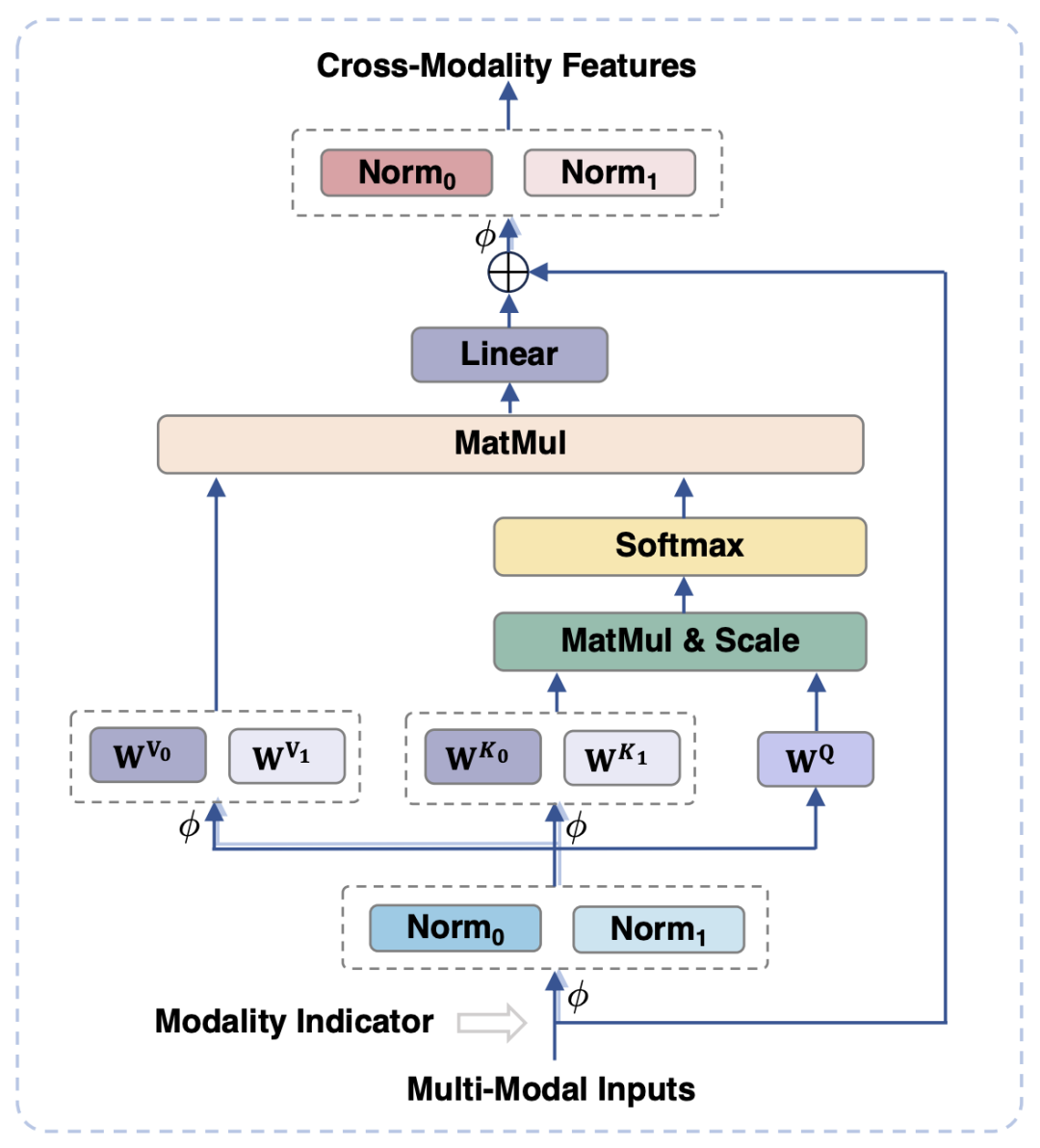
Figure 3 shows the schematic diagram of the modal adaptation module
shown in Figure 3 Yes, compared with the traditional Transformer, the main design of the modal adaptation module is:- In the input and output stages of the module, LayerNorm operations are performed on the visual and language modalities respectively. to adapt to the respective feature distributions of the two modes.
- In the self-attention operation, separate key and value projection matrices are used for visual and language modalities, but a shared query projection matrix is used to decouple the key and value projections. The matrix can avoid interference between the two modalities when the semantic granularity does not match.
- By sharing the same FFN, the two modalities can promote collaboration between each other
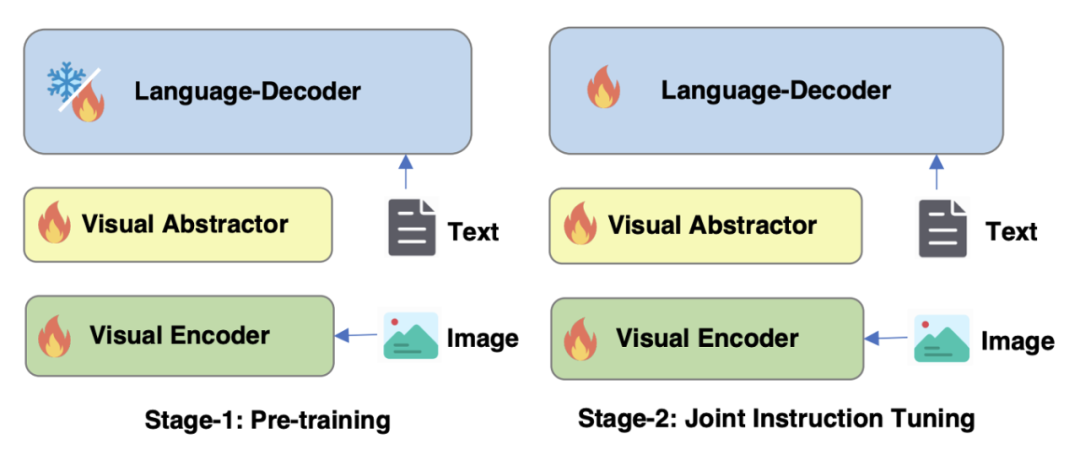
Optimize the training strategy of mPLUG-Owl2 in Figure 4
As shown in Figure 4, the training of mPLUG-Owl2 includes two stages: pre-training and instruction fine-tuning. The pre-training stage is mainly to achieve the alignment of the visual encoder and the language model. At this stage, the Visual Encoder and Visual Abstractor are trainable, and in the language model, only the visual-related model weights added by the Modality Adaptive Module are processed. renew. In the instruction fine-tuning stage, all parameters of the model are fine-tuned based on text and multi-modal instruction data (as shown in Figure 5) to improve the model's instruction following ability.

Figure 5 Instruction fine-tuning data used by mPLUG-Owl2
Experiment and results
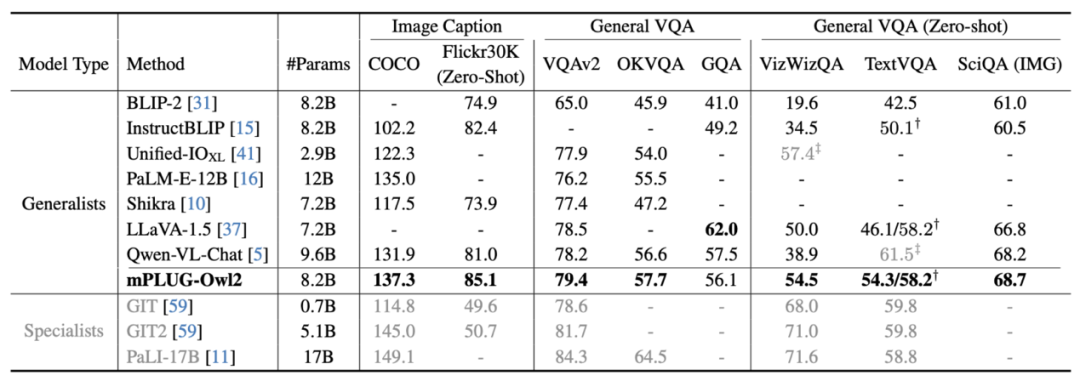
Figure 6 Image description and VQA task performance
Figure 7 MLLM benchmark performance
As shown in Figure 6 and Figure 7, whether it is traditional image description, VQA and other visual-language tasks, or MMBench, Q-Bench, etc. On benchmark data sets for multi-modal large models, mPLUG-Owl2 has achieved better performance than existing work.

Figure 8 Plain text benchmark performance
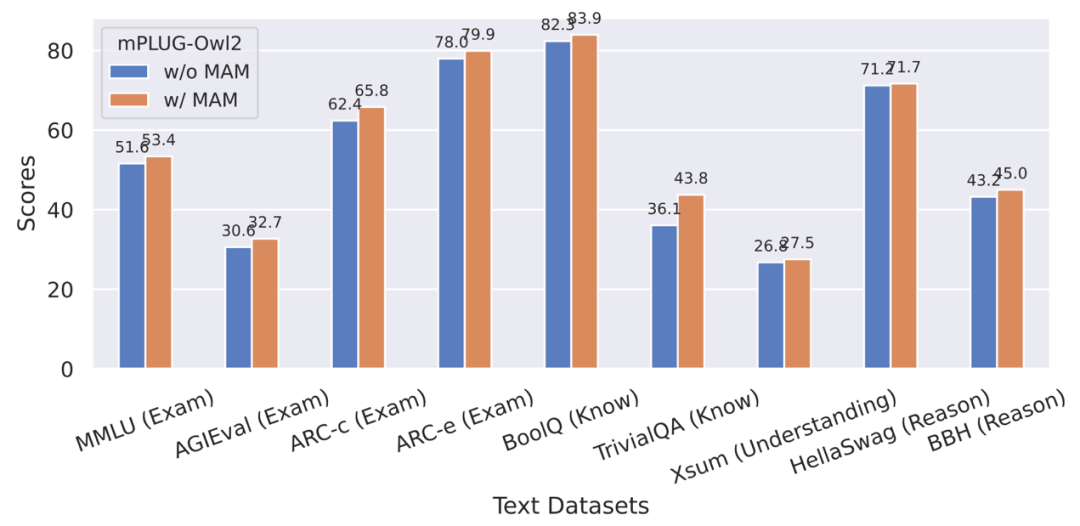
##Figure 9 The impact of modal adaptation module on the performance of plain text tasks
In addition, in order to evaluate the impact of modal collaboration on plain text tasks, the author also tested mPLUG -Owl2 performance in natural language understanding and generation. As shown in Figure 8, mPLUG-Owl2 achieves better performance compared to other instruction-fine-tuned LLMs. Figure 9 shows the performance on the plain text task. It can be seen that since the modal adaptation module promotes modal collaboration, the model's examination and knowledge capabilities have been significantly improved. The author analyzes that this is because multi-modal collaboration enables the model to use visual information to understand concepts that are difficult to describe in language, and enhances the model's reasoning ability through the rich information in the image, and indirectly strengthens the reasoning ability of the text.
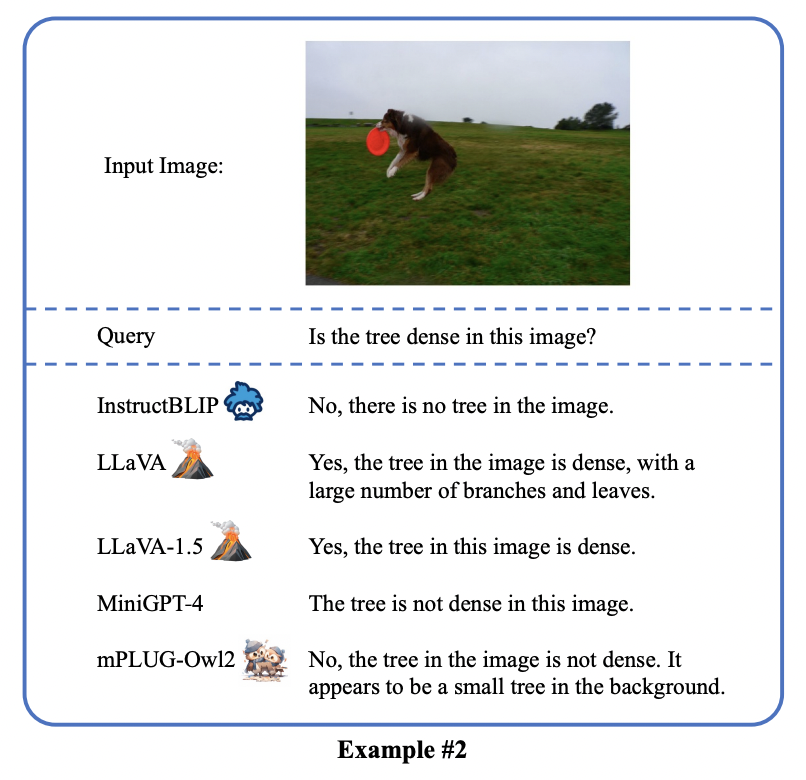
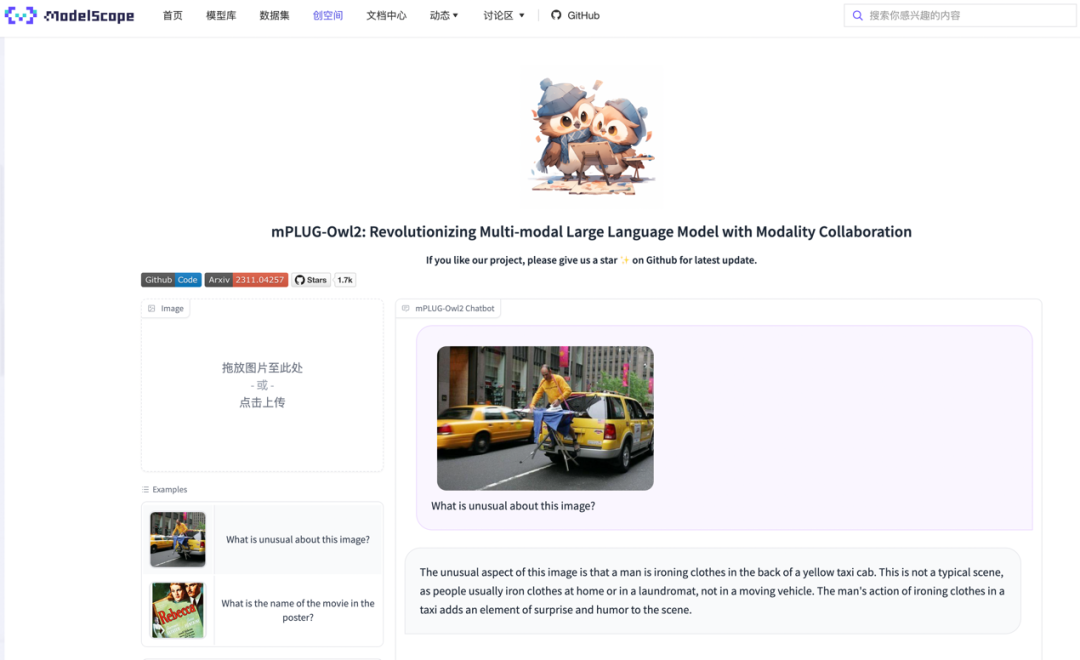
The above is the detailed content of Alibaba's new mPLUG-Owl upgrade has the best of both worlds, and modal collaboration enables MLLM's new SOTA. For more information, please follow other related articles on the PHP Chinese website!

Hot AI Tools

Undresser.AI Undress
AI-powered app for creating realistic nude photos

AI Clothes Remover
Online AI tool for removing clothes from photos.

Undress AI Tool
Undress images for free

Clothoff.io
AI clothes remover

Video Face Swap
Swap faces in any video effortlessly with our completely free AI face swap tool!

Hot Article

Hot Tools

Notepad++7.3.1
Easy-to-use and free code editor

SublimeText3 Chinese version
Chinese version, very easy to use

Zend Studio 13.0.1
Powerful PHP integrated development environment

Dreamweaver CS6
Visual web development tools

SublimeText3 Mac version
God-level code editing software (SublimeText3)

Hot Topics
 DeepMind robot plays table tennis, and its forehand and backhand slip into the air, completely defeating human beginners
Aug 09, 2024 pm 04:01 PM
DeepMind robot plays table tennis, and its forehand and backhand slip into the air, completely defeating human beginners
Aug 09, 2024 pm 04:01 PM
But maybe he can’t defeat the old man in the park? The Paris Olympic Games are in full swing, and table tennis has attracted much attention. At the same time, robots have also made new breakthroughs in playing table tennis. Just now, DeepMind proposed the first learning robot agent that can reach the level of human amateur players in competitive table tennis. Paper address: https://arxiv.org/pdf/2408.03906 How good is the DeepMind robot at playing table tennis? Probably on par with human amateur players: both forehand and backhand: the opponent uses a variety of playing styles, and the robot can also withstand: receiving serves with different spins: However, the intensity of the game does not seem to be as intense as the old man in the park. For robots, table tennis
 The first mechanical claw! Yuanluobao appeared at the 2024 World Robot Conference and released the first chess robot that can enter the home
Aug 21, 2024 pm 07:33 PM
The first mechanical claw! Yuanluobao appeared at the 2024 World Robot Conference and released the first chess robot that can enter the home
Aug 21, 2024 pm 07:33 PM
On August 21, the 2024 World Robot Conference was grandly held in Beijing. SenseTime's home robot brand "Yuanluobot SenseRobot" has unveiled its entire family of products, and recently released the Yuanluobot AI chess-playing robot - Chess Professional Edition (hereinafter referred to as "Yuanluobot SenseRobot"), becoming the world's first A chess robot for the home. As the third chess-playing robot product of Yuanluobo, the new Guoxiang robot has undergone a large number of special technical upgrades and innovations in AI and engineering machinery. For the first time, it has realized the ability to pick up three-dimensional chess pieces through mechanical claws on a home robot, and perform human-machine Functions such as chess playing, everyone playing chess, notation review, etc.
 Claude has become lazy too! Netizen: Learn to give yourself a holiday
Sep 02, 2024 pm 01:56 PM
Claude has become lazy too! Netizen: Learn to give yourself a holiday
Sep 02, 2024 pm 01:56 PM
The start of school is about to begin, and it’s not just the students who are about to start the new semester who should take care of themselves, but also the large AI models. Some time ago, Reddit was filled with netizens complaining that Claude was getting lazy. "Its level has dropped a lot, it often pauses, and even the output becomes very short. In the first week of release, it could translate a full 4-page document at once, but now it can't even output half a page!" https:// www.reddit.com/r/ClaudeAI/comments/1by8rw8/something_just_feels_wrong_with_claude_in_the/ in a post titled "Totally disappointed with Claude", full of
 At the World Robot Conference, this domestic robot carrying 'the hope of future elderly care' was surrounded
Aug 22, 2024 pm 10:35 PM
At the World Robot Conference, this domestic robot carrying 'the hope of future elderly care' was surrounded
Aug 22, 2024 pm 10:35 PM
At the World Robot Conference being held in Beijing, the display of humanoid robots has become the absolute focus of the scene. At the Stardust Intelligent booth, the AI robot assistant S1 performed three major performances of dulcimer, martial arts, and calligraphy in one exhibition area, capable of both literary and martial arts. , attracted a large number of professional audiences and media. The elegant playing on the elastic strings allows the S1 to demonstrate fine operation and absolute control with speed, strength and precision. CCTV News conducted a special report on the imitation learning and intelligent control behind "Calligraphy". Company founder Lai Jie explained that behind the silky movements, the hardware side pursues the best force control and the most human-like body indicators (speed, load) etc.), but on the AI side, the real movement data of people is collected, allowing the robot to become stronger when it encounters a strong situation and learn to evolve quickly. And agile
 ACL 2024 Awards Announced: One of the Best Papers on Oracle Deciphering by HuaTech, GloVe Time Test Award
Aug 15, 2024 pm 04:37 PM
ACL 2024 Awards Announced: One of the Best Papers on Oracle Deciphering by HuaTech, GloVe Time Test Award
Aug 15, 2024 pm 04:37 PM
At this ACL conference, contributors have gained a lot. The six-day ACL2024 is being held in Bangkok, Thailand. ACL is the top international conference in the field of computational linguistics and natural language processing. It is organized by the International Association for Computational Linguistics and is held annually. ACL has always ranked first in academic influence in the field of NLP, and it is also a CCF-A recommended conference. This year's ACL conference is the 62nd and has received more than 400 cutting-edge works in the field of NLP. Yesterday afternoon, the conference announced the best paper and other awards. This time, there are 7 Best Paper Awards (two unpublished), 1 Best Theme Paper Award, and 35 Outstanding Paper Awards. The conference also awarded 3 Resource Paper Awards (ResourceAward) and Social Impact Award (
 Hongmeng Smart Travel S9 and full-scenario new product launch conference, a number of blockbuster new products were released together
Aug 08, 2024 am 07:02 AM
Hongmeng Smart Travel S9 and full-scenario new product launch conference, a number of blockbuster new products were released together
Aug 08, 2024 am 07:02 AM
This afternoon, Hongmeng Zhixing officially welcomed new brands and new cars. On August 6, Huawei held the Hongmeng Smart Xingxing S9 and Huawei full-scenario new product launch conference, bringing the panoramic smart flagship sedan Xiangjie S9, the new M7Pro and Huawei novaFlip, MatePad Pro 12.2 inches, the new MatePad Air, Huawei Bisheng With many new all-scenario smart products including the laser printer X1 series, FreeBuds6i, WATCHFIT3 and smart screen S5Pro, from smart travel, smart office to smart wear, Huawei continues to build a full-scenario smart ecosystem to bring consumers a smart experience of the Internet of Everything. Hongmeng Zhixing: In-depth empowerment to promote the upgrading of the smart car industry Huawei joins hands with Chinese automotive industry partners to provide
 Li Feifei's team proposed ReKep to give robots spatial intelligence and integrate GPT-4o
Sep 03, 2024 pm 05:18 PM
Li Feifei's team proposed ReKep to give robots spatial intelligence and integrate GPT-4o
Sep 03, 2024 pm 05:18 PM
Deep integration of vision and robot learning. When two robot hands work together smoothly to fold clothes, pour tea, and pack shoes, coupled with the 1X humanoid robot NEO that has been making headlines recently, you may have a feeling: we seem to be entering the age of robots. In fact, these silky movements are the product of advanced robotic technology + exquisite frame design + multi-modal large models. We know that useful robots often require complex and exquisite interactions with the environment, and the environment can be represented as constraints in the spatial and temporal domains. For example, if you want a robot to pour tea, the robot first needs to grasp the handle of the teapot and keep it upright without spilling the tea, then move it smoothly until the mouth of the pot is aligned with the mouth of the cup, and then tilt the teapot at a certain angle. . this
 Distributed Artificial Intelligence Conference DAI 2024 Call for Papers: Agent Day, Richard Sutton, the father of reinforcement learning, will attend! Yan Shuicheng, Sergey Levine and DeepMind scientists will give keynote speeches
Aug 22, 2024 pm 08:02 PM
Distributed Artificial Intelligence Conference DAI 2024 Call for Papers: Agent Day, Richard Sutton, the father of reinforcement learning, will attend! Yan Shuicheng, Sergey Levine and DeepMind scientists will give keynote speeches
Aug 22, 2024 pm 08:02 PM
Conference Introduction With the rapid development of science and technology, artificial intelligence has become an important force in promoting social progress. In this era, we are fortunate to witness and participate in the innovation and application of Distributed Artificial Intelligence (DAI). Distributed artificial intelligence is an important branch of the field of artificial intelligence, which has attracted more and more attention in recent years. Agents based on large language models (LLM) have suddenly emerged. By combining the powerful language understanding and generation capabilities of large models, they have shown great potential in natural language interaction, knowledge reasoning, task planning, etc. AIAgent is taking over the big language model and has become a hot topic in the current AI circle. Au





